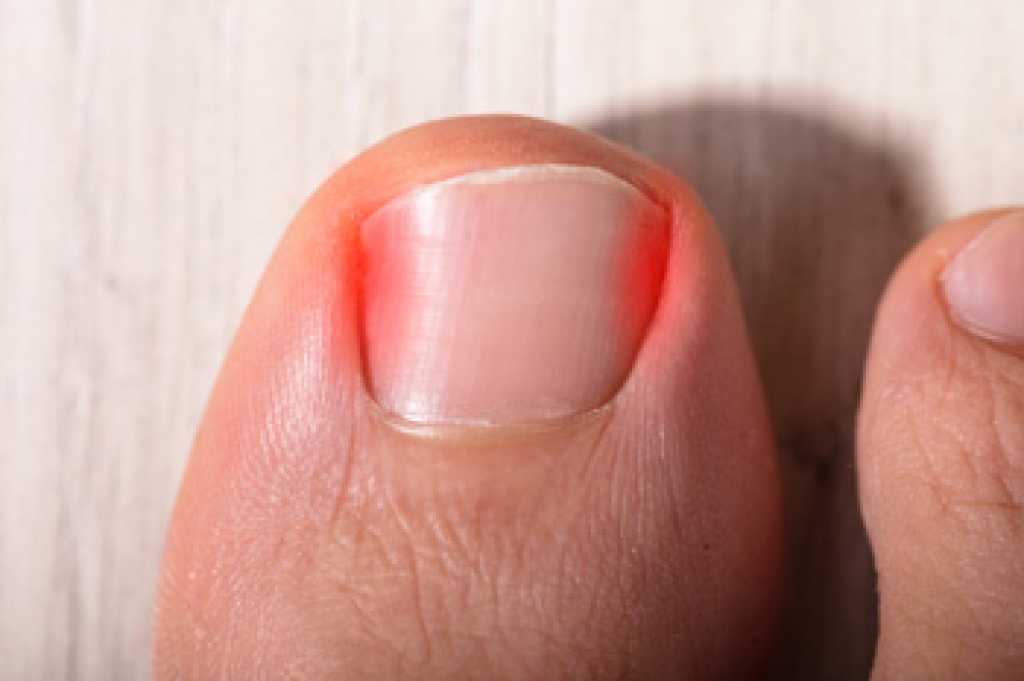
Ingrown toenails occur when the edge of the toenail grows into the surrounding skin, causing discomfort and sometimes infection. Common causes include improper nail trimming, wearing tight or narrow shoes, injury, or hereditary factors. Symptoms often include pain, redness, swelling, and tenderness along the side of the toenail. In more severe cases, there may be drainage or signs of infection, making walking or wearing shoes uncomfortable. Visually, the affected area may appear swollen and inflamed, with skin that is red and irritated. A podiatrist can diagnose ingrown toenails through a physical examination and patient history. Treatment options range from conservative care such as soaking, proper nail trimming techniques, and footwear advice, to minor surgical procedures that remove part of the nail to relieve pressure. Early intervention can prevent complications and relieve pain. For a proper diagnosis and effective treatment, it is suggested that you schedule an appointment with a podiatrist.
Ingrown toenails may initially present themselves as a minor discomfort, but they may progress into an infection in the skin without proper treatment. For more information about ingrown toenails, contact one of our podiatrists of Brondon Foot and Ankle. Our doctors can provide the care you need to keep you pain-free and on your feet.
Ingrown Toenails
Ingrown toenails are caused when the corner or side of a toenail grows into the soft flesh surrounding it. They often result in redness, swelling, pain, and in some cases, infection. This condition typically affects the big toe and may recur if it is not treated properly.
Causes
- Improper toenail trimming
- Genetics
- Improper shoe fitting
- Injury from pedicures or nail picking
- Abnormal gait
- Poor hygiene
You are more likely to develop an ingrown toenail if you are obese, have diabetes, arthritis, or have any fungal infection in your nails. Additionally, people who have foot or toe deformities are at a higher risk of developing an ingrown toenail.
Symptoms
Some symptoms of ingrown toenails are redness, swelling, and pain. In rare cases, there may be a yellowish drainage coming from the nail.
Treatment
Ignoring an ingrown toenail can have serious complications. Infections of the nail border can progress to a deeper soft-tissue infection, which can then turn into a bone infection. You should always speak with your podiatrist if you suspect you have an ingrown toenail, especially if you have diabetes or poor circulation.
If you have any questions, please feel free to contact our office located in Centerville, OH . We offer the newest diagnostic and treatment technologies for all your foot care needs.
